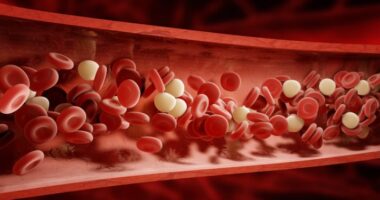Galectin-3 May Serve as Early Biomarker of Cardiac Problems

Levels of the protein, galectin-3, are associated with heart involvement in people with systemic sclerosis (SSc), according to a recent pilot study.
The protein could be used as a biomarker to more quickly detect and address cardiac problems. Another protein, called soluble suppression of tumorigenicity-2 (sST2), was also evaluated, but did not show any relationship to heart involvement.
“Our results suggest that galectin-3 may be a useful and simple biomarker for the screening and early identification of SSc patients with cardiac involvement. Our data does not support the use of sST2 for the same purpose,” the researchers wrote.
The study, “Galectin-3 and sST2: associations to the echocardiographic markers of the myocardial mechanics in systemic sclerosis – a pilot study,” was published in Cardiovascular Ultrasound.
SSc is marked by too much collagen, a protein found in connective tissue that helps to repair wounds, being produced, resulting in excessive scarring, or fibrosis, of the skin and internal organs.
Cardiac fibrosis can lead to heart dysfunction and poorer outcomes, or prognosis, so it is important to identify patients at risk for heart complications.
“Cardiac involvement implies poor prognosis in SSc, thus its early, biomarker-based screening would be crucial,” the team wrote.
To determine usefulness of such biomarkers, the researchers evaluated 36 women and four men with SSc being treated at a University of Pécs center in Hungary. The patients’ median age was 57.3.
Levels of the two fibrosis-related proteins were measured before an echocardiogram and lung function tests were performed. Galectin-3 promotes fibrosis and mediates collagen production, while sST2 blocks interleukin-33, a protein that protects against fibrosis.
These proteins were chosen because previous studies showed they correlated with heart involvement, and could predict mortality in heart failure patients. Galectin-3 has also been proposed as a blood biomarker of scleroderma.
Results from the lung tests showed that higher galectin-3 levels correlated with worse lung function.
Specifically, people with more galectin-3 had lower measures in forced expiratory volume (how much air can be exhaled in one breath), and diffusing capacity of carbon monoxide (how much oxygen travels from the lungs to the bloodstream).
An echocardiogram revealed that galectin-3 was also associated with several indicators of heart dysfunction.
Higher galectin-3 levels correlated with both left ventricle systolic dysfunction, or the heart’s inability to contract appropriately during heartbeats, and diastolic dysfunction, the heart’s inability to relax after a heartbeat.
High levels of the protein were also seen with mitral valve regurgitation, which occurs when the heart’s mitral valve, responsible for keeping blood flowing in the right direction, doesn’t fully close, allowing blood to travel backwards.
Galectin-3 levels also correlated with disease duration, results showed.
In contrast, sST2 was not correlated with any clinical, lung, or echocardiographic measurements, a contrast to previous studies in heart failure patients.
Based on the results, the team concluded that “Galectin-3 may be a useful biomarker for the screening and early diagnosis of SSc patients with cardiac involvement.”
But “ … unlike to the previous findings, we failed to demonstrate any relationship between sST2 levels and the clinical characteristics of the disease or the echocardiographic markers of the [heart] mechanics in SSc patients,” the researchers wrote.
Researchers noted that the study lacked a healthy control group, meaning they couldn’t define normal galectin-3 or sST2 blood levels. Another study limitation was that, while galectin-3 and sST2 indirectly suggest the presence of cardiac fibrosis, they did not prove that fibrosis was present in these patients.
“Circulating biomarker levels require careful interpretation in relation to [cardiac] involvement,” the researchers wrote.






